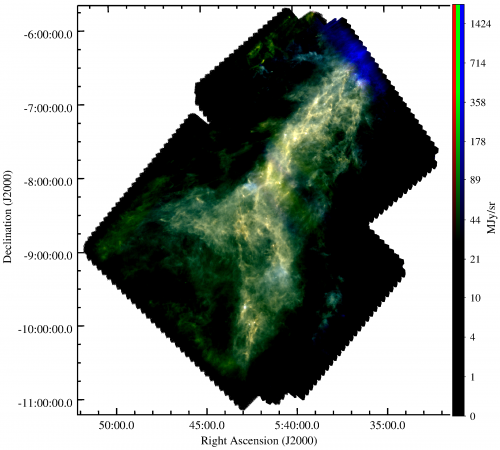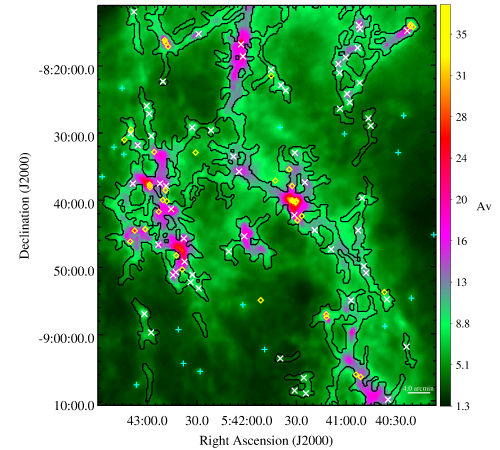Stars born in filaments tend to outweigh stars formed in the field

The mass distribution of stars is called the initial mass function, or IMF for short, and it characterizes the properties not only of our Milky Way, but of all the other galaxies we observe as well. But is the IMF constant? Does it vary from galaxy to galaxy? Does it vary within our galaxy? After decades of studying we still are not sure how the environment affects the process of star formation, aside from the fact that the IMF seems peculiarly constant within the Milky Way.
Ironically this failure in our understanding is mainly due to the fact that stars are very private individuals that hide their forming years behind very cold and dusty environments, which we can only probe using long wavelength observations such as those in the infrared. The Herschel mission, however, has recently opened for us a window in the star formation environments with spectacular results.
The general principle through which stars should form implies the collapse of a region of the clouds under its own gravity until the pressure becomes high enough to ignite the nuclear burning that powers the stars. A single star forming event in a gas cloud can give birth to a few hundred stars that have a given mass distribution, spanning from stars that are dwarfs with respect to our Sun to other that have tens or a hundred times more mass than the Sun.
The Herschel Space Observatory has revealed that the star forming sites across the Milky Way are riddled with filaments: tube-like structures of gas and dust that span tens of parsecs [1 parsec = 3.26 light-years] within molecular clouds. Although the existence of such structures has been known for quite a few years, this is the first time that we can resolve them and start exploring their nature and properties, thanks to this ESA satellite. Despite the fact that we do not really understand how filaments are formed their importance in the star forming process is apparent as we observe most of the embryonic stars to be located on such structures.
In a study recently published on the Astrophysical Journal Letters, an international team of researchers of the Gould Belt Herschel Consortium led by Danae Polychroni, of the University of Athens and formerly at INAF/IAPS, has investigated the relationship between filaments and the characteristics of the embryonic stars that form within them. Using the L1641 molecular cloud that is part of the Orion A complex, the team showed that the mass distributions of the forming stars, which will become the IMF of that stellar population, are similar yet distinct for stars forming in the field (outside of the filaments) and on the filaments, with the former peaking at smaller mass values than the latter. In other words, stars forming within filaments tend to be more massive than stars forming in the field.

"We believe the reason for this is simply that on the filaments the embryonic stars have access to more 'food', or as we say there is more gas and dust available for these objects to accrete from, and grow bigger than their poor cousins in the field that are 'starved,'" explains Dr. Polychroni. "If this result is confirmed by future studies it would mean that the initial mass function is not dependent on how the stars form but on the availability of material nearby the embryonic stars from which they accrete their mass."
This is an important result achieved thanks to Herschel, a space mission by the European Space Agency that put an infrared telescope escorting the Earth in its orbit around the Sun, cooled down to a few degrees above absolute zero to reach unprecedented sensitivity. Herschel has been used by the scientific community to observe star formation sites throughout the Milky Way as well as in galaxies like Andromeda and the Magellanic Clouds.
Although the Herschel mission concluded its operative life earlier this year when it ran out of the helium necessary to cool down its instruments, its legacy remains in the largely unexplored data supplied during the three years of its activity. Studies such as the one led by Dr. Polychroni have the potential to uncover answers for many of the questions on how stars form as well as give rise to many more questions that future missions and generations of scientists will have to address. The Herschel Gould Belt Consortium is indeed going to publish the analysis of the Herschel data for all nearby star forming regions in a series papers.
More information: Paper: dx.doi.org/10.1088/2041-8205/777/2/L33
Journal information: Astrophysical Journal Letters
Provided by Italian National Institute of Astrophysics





















